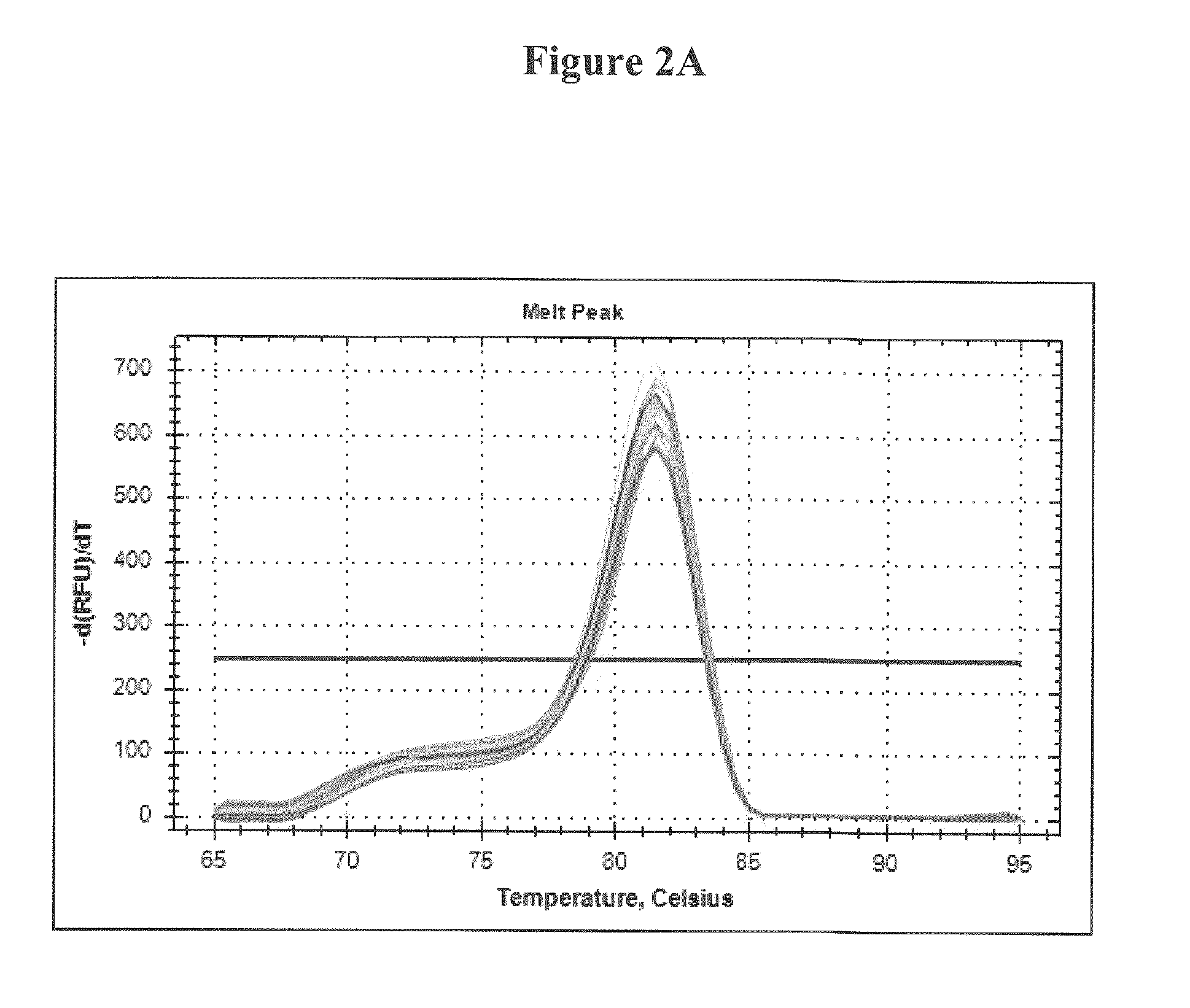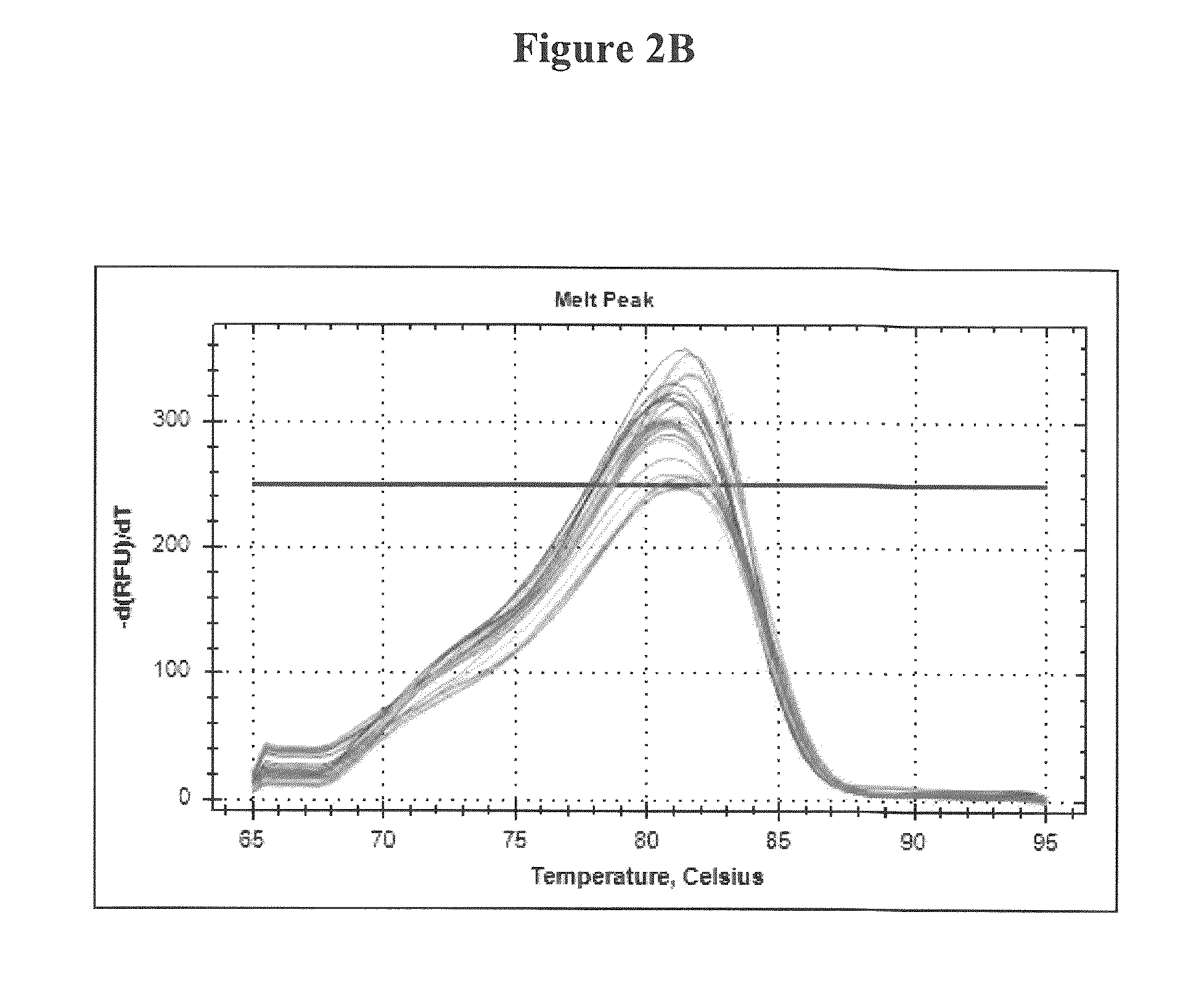Development of a highly sensitive quantification system for assessing DNA degradation and quality in forensic samples
a forensic sample and quantification system technology, applied in the direction of microbiological testing/measurement, biochemistry apparatus and processes, etc., can solve the problems of lack of sensitivity or low pcr efficiency of previous studies, and achieve the effect of improving the correlation of 172 bp ipc, facilitating inhibition, and reducing the number of inhibitors
- Summary
- Abstract
- Description
- Claims
- Application Information
AI Technical Summary
Benefits of technology
Problems solved by technology
Method used
Image
Examples
example 1
Primers and Probes
[0086]Primers and probes that are useful in the described embodiments are shown in Table 1. An intra RE primer design was used to target a Yb8 Alu sequence of 79 bp in size for the “short” fragment as well as a sequence in the SINE-R region of SVA of 290 bp in size for the “long” target. An internal positive control (IPC) to assess the presence or absence of inhibitors in the sample was studied as well. IPC target synthetic sequences of 92 bp, 158 bp, 172 bp, and 192 bp were studied. Inhibition studies using inhibitors commonly found in forensic samples were performed on the 92 bp, 158 bp, and 172 bp IPC target sequences.
[0087]Two systems were developed: one three target system containing the Yb8 “short” Alu fragment labeled in FAM, the SVA “long” fragment labeled in Cy5, and a synthetic sequence labeled with Cy3 dye used as the IPC. A second system comprised of four targets was developed incorporating a male specific DNA target sequence to detect male DNA in the s...
example 2
Number of Cycles
[0090]The manufacturer recommendation for the QPCR Multiplex master mix is: 95° C. for 10 minutes followed by 40 cycles of 95° C. for 15 seconds and 60° C. for 60 seconds. To test the number of cycles that would be optimal for the duel target quantification assay, the number of cycles was varied. Tests of 40 cycles and 32 cycles were carried out, and PCR efficiency values were examined. The results showed higher PCR efficiencies when 32 cycles were used.
example 3
Annealing and Denaturation Times
[0091]The manufacturer recommendation for PCR conditions is: 95° C. for 10 minutes followed by 40 cycles of 95° C. for 15 seconds and 60° C. for 60 seconds. To test which PCR conditions would be optimal for the InnoQuant Quantification Kit (InnoGenomics Technologies, LLC), denaturation and annealing times were varied. Four annealing times were tested: 45, 60, 70, and 120 seconds; and two denaturation times were tested: 15 seconds and 30 seconds. PCR efficiency, R2 values, and standard deviation of the triplicate quantitation values (three DNA extracts were run in triplicate) were examined.
[0092]Results indicate that, for the preferred embodiment of the present invention, the longer second annealing time yields slightly improved PCR efficiencies and lower standard deviation of the triplicate quantification values than was achieved at shorter annealing times. A longer annealing time also provides more time for the enzyme to function properly with the lo...
PUM
| Property | Measurement | Unit |
|---|---|---|
| time | aaaaa | aaaaa |
| time | aaaaa | aaaaa |
| temperature | aaaaa | aaaaa |
Abstract
Description
Claims
Application Information
 Login to View More
Login to View More - R&D
- Intellectual Property
- Life Sciences
- Materials
- Tech Scout
- Unparalleled Data Quality
- Higher Quality Content
- 60% Fewer Hallucinations
Browse by: Latest US Patents, China's latest patents, Technical Efficacy Thesaurus, Application Domain, Technology Topic, Popular Technical Reports.
© 2025 PatSnap. All rights reserved.Legal|Privacy policy|Modern Slavery Act Transparency Statement|Sitemap|About US| Contact US: help@patsnap.com



